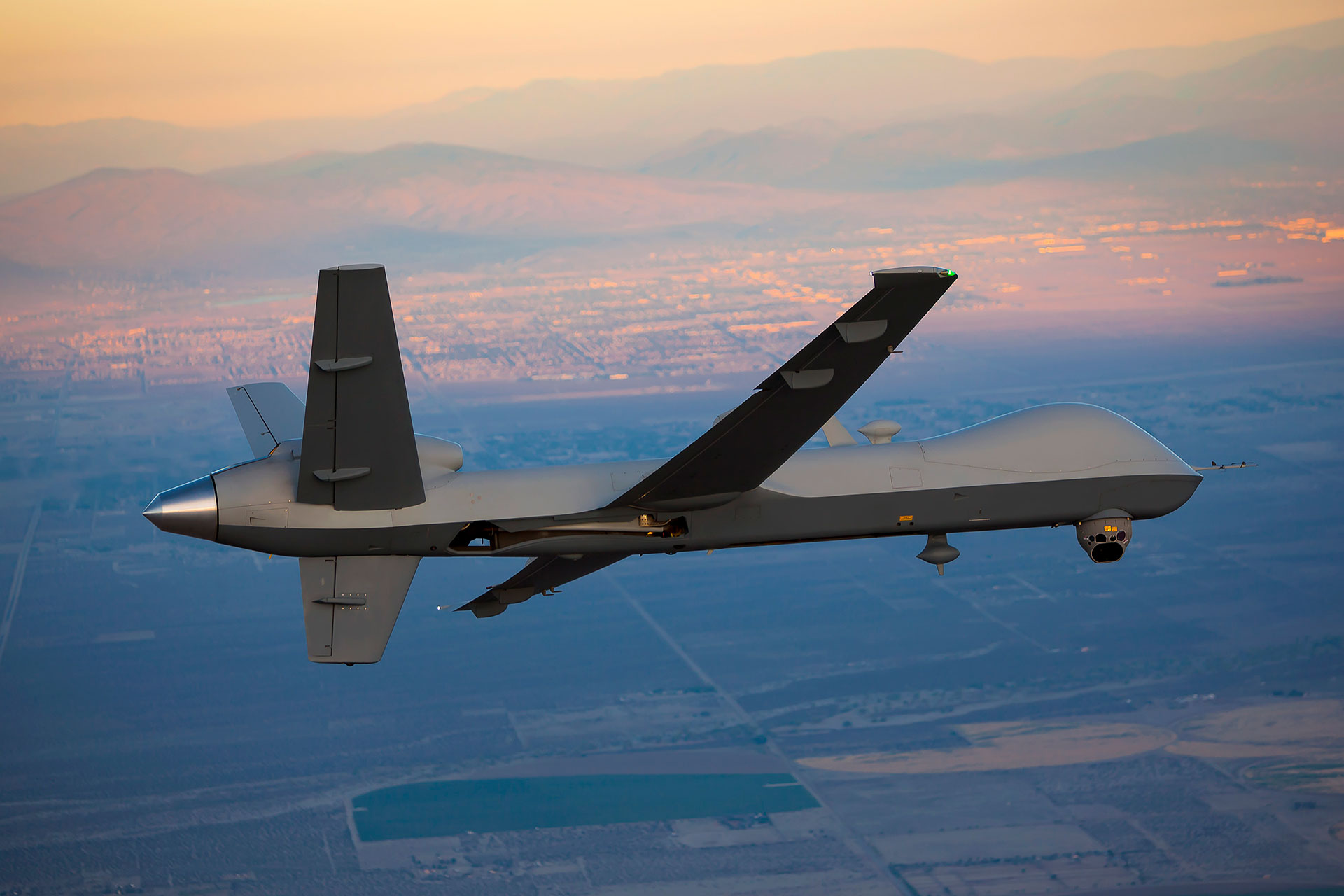Canada has decided to delay its US$3.6 billion acquisition of the General Atomics MQ-9 medium altitude drones to allow for additional development work, pushing the delivery of the first aircraft from 2025 to 2028.
Chinese Laser Attack Forces US Air Force To Acquire 42,000 Anti-Laser Gear To Defend Its Military Pilots
The reason behind the delay revolves around the need for further development to ensure these drones can effectively operate in the Arctic, a crucial requirement for the Royal Canadian Air Force (RCAF).
The original plan was to deploy a fleet of drones through the Remotely Piloted Aircraft System project, targeting a 2025 operational readiness.
Andrée-Anne Poulin, spokesperson for the Department of National Defence, told Defense News that the delay is necessary for the significant development work required to adapt the Canadian RPAS configuration to meet specific Royal Canadian Air Force (RCAF) requirements, which differ from those of allied nations.
Integrating new systems on the MQ-9 drones is crucial, especially for operations in the Arctic, involving the use of satellites, aircraft antennas, and communication components not previously incorporated into the drone.

Operating at high northern latitudes presents challenges and necessitates additional testing and qualification work to ensure the RPAS can function and be maintained in Canadian climatic conditions.
Adding the Canadian-made WESCAM MX-20 EO/IR sensor onto the platform is also part of the developmental effort. Other requirements include developing a training solution tailored to RCAF’s needs and securing airworthiness certification to support the RCAF’s concept of operations.
Despite these delays, Ottawa is keen on finalizing the contract for the MQ-9 armed drones by the end of this year or early next year.
Meanwhile, the US State Department has approved a potential Foreign Military Sale to Canada for 219 Hellfire missiles and other weapons and radars, worth an estimated US$313 million, to be used by the MQ-9B.
This proposed sale aligns with the planned timelines for the RPAS project, and the equipment will be delivered as needed to support integration, testing, and production work conducted by General Atomics.
Canada’s Drone Procurement Program
In 2017, the Canadian government unveiled its plan to enhance national defense capabilities by investing in armed drones. A competition was initiated to fulfill the requirements, but it faced setbacks when one of the developers withdrew from the process.
The Department of National Defence in Canada disclosed that L3Harris and General Atomics emerged as finalists to be the prime contractor for the Remotely Piloted Aircraft System (RPAS) program, with the US government partnering with General Atomics on the bid.
However, L3Harris exited the competition in June 2022, leaving General Atomics as the sole contender for the program.
L3Harris tailored its bid around an Israel Aerospace Industries Heron TP, which underwent modifications to align with Canadian RPAS specifications. These adjustments specifically catered to unique demands, such as functioning effectively in cold-weather conditions.
On the other hand, General Atomics has put forth its MQ-9B SkyGuardian as the proposed unmanned aerial vehicle (UAV) for the Remotely Piloted Aircraft System (RPAS) in Canada. The MQ-9B SkyGuardian represents an enhanced iteration of the MQ-9A Reaper UAV, a platform rooted in the earlier MQ-1 Predator.
The proposal suggested that Canada acquire the SkyGuardians through direct commercial sales, a process that has received approval from the US State Department.
Despite Ottawa launching a program and securing approval from the US State Department to procure Unmanned Aerial Vehicles (UAVs) for the Royal Canadian Air Force (RCAF), no official contract has been established so far for the Remotely Piloted Aircraft System (RPAS) platform.
The RPAS project has allocated a budget of up to US$3.71 billion to procure a fleet of armed UAVs. These unmanned aircraft are intended to bolster intelligence, surveillance, and reconnaissance capabilities while offering precision strike capabilities.
The delivery of the RCAF’s initial RPAS aircraft is now anticipated in 2028, with the complete operational capability of the UAV fleet expected by the mid-2030s.
Nevertheless, MQ-9 drones have frequently made headlines in recent years due to their vulnerability when operating in contested airspace. The latest incident occurred on November 8 when Yemen’s Houthi rebels’ air defenses shot down a US MQ-9 Reaper drone.
In March 2023, a Russian Su-27 intercepted and sprayed a jet fuel douse on an MQ-9 Reaper Surveillance drone flying over the Black Sea. The drone’s propeller sustained significant damage, prompting US forces to crash it into the water intentionally.
On June 6, 2019, Houthi rebels downed a US MQ-9 Reaper over Yemen using an SA-6 surface-to-air missile (SAM) with Iranian assistance. Another unarmed MQ-9 met a similar fate on August 21, 2019, when it was shot down by Houthis over Dhamar, Yemen, using the Yemeni-made Fater-1 missile, an improved SA-6.
On November 23, 2019, an MQ-9 was targeted and brought down by a Pantsir system operated by either the Libyan National Army or the Wagner Group over Tripoli, Libya.
- Contact the author at ashishmichel(at)gmail.com
- Follow EurAsian Times on Google News